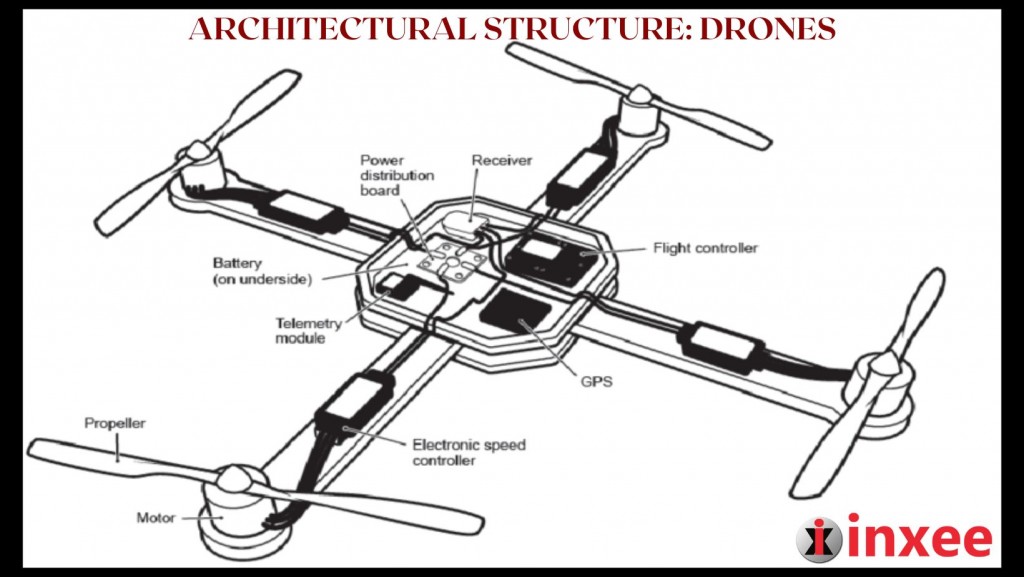Architectural Structure of Drones
Drones, also known as Unmanned Aerial Vehicles (UAVs), have revolutionized the way we see the world from above. Their architecture and design have evolved greatly over the years, allowing for greater versatility and efficiency in their use.
The basic architecture of a drone consists of several key components: the frame, motors, battery, control systems, cameras, and other sensors. The frame of a drone is the backbone of the entire structure and must be lightweight, yet strong enough to support the other components. The motors are responsible for providing lift and propulsion, while the battery powers the drone. The control system includes the microcontroller, which acts as the brain of the drone, and the radio receiver and transmitter, which allow the pilot to control the drone from a remote location.
Drones also have an array of cameras and sensors that are essential for navigation and data collection. The cameras can be used for capturing images or video, while the sensors are used for detecting obstacles, measuring temperature, humidity, and other environmental variables. Some drones also have advanced sensors, such as LIDAR and thermal imaging, which provide high-resolution data for mapping and analysis.
Another important aspect of drone architecture is the flight control system. This system includes the sensors, algorithms, and software that work together to keep the drone stable and under control. The flight control system must be able to respond to changes in the environment and make adjustments to the drone’s flight path to ensure safe and efficient operation.
Finally, the design of the drone’s propulsion system is critical to its success. The number of motors and their placement, as well as the design of the propellers and their size, must be carefully considered to ensure the drone has enough power and stability to fly effectively.
The architecture of drones has come a long way from their early days as simple flying toys. Today, they are sophisticated machines that are capable of capturing high-resolution data, performing complex missions, and providing valuable insights into the world around us. As technology continues to advance, we can expect to see even more innovative and advanced designs in the future of drone architecture.










Leave a Reply